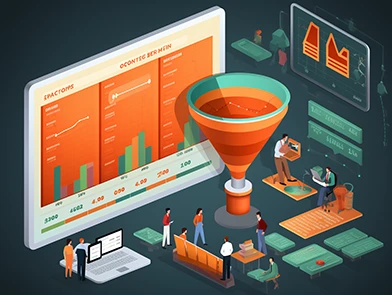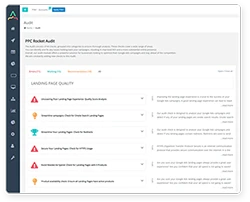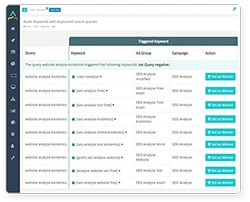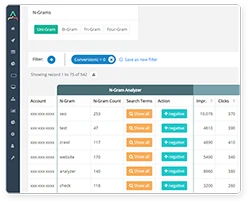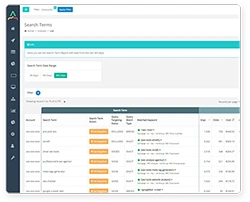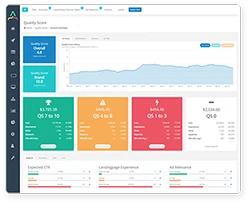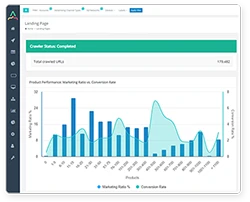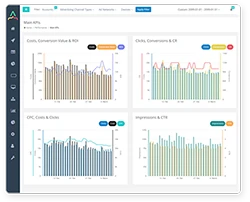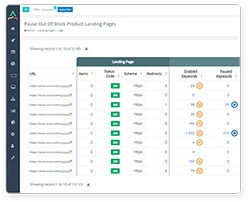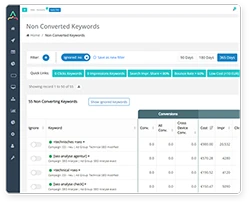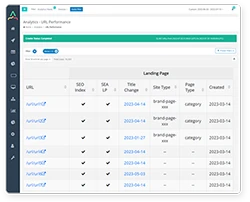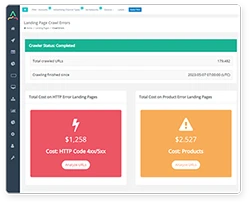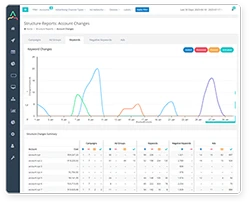5 Key PPC Marketing Metrics to Track to Maximize ROI
Pay-per-click (PPC) marketing is an effective way to drive traffic to a website and generate leads and sales. However, to achieve the desired results, it is crucial to track the right metrics. PPC advertising is a money-driven strategy, and a single mistake can cost a company a lot of money. Therefore, tracking the right metrics is essential to the success of any PPC campaign.
This article will discuss the key PPC marketing metrics to track to maximize ROI.
Start Creating Better Google Ads
See how PPC Rocket can help you achieve best practices when it comes to Google Ads. Optimize your ad spend with all the tools you need to measure, track, and improve performance.
Click-Through Rate (CTR)
The click-through rate (CTR) is one of the most critical metrics to track in PPC advertising. It is the percentage of people who click on an ad after seeing it. A high CTR indicates that the ad is relevant to the target audience and resonates with them. A low CTR means that the ad is not resonating with the target audience, and it needs to be optimized. A CTR of 2% or higher is considered good.
Conversion Rate
The conversion rate is the percentage of people who complete a desired action on a website after clicking on an ad. A desired action can be anything from filling out a form to making a purchase. A high conversion rate indicates that the ad is relevant to the target audience and it is driving qualified traffic to the website.
A low conversion rate means that the ad is not resonating with the target audience, and it needs to be optimized. A conversion rate of 2% or higher is considered good.
Cost Per Click (CPC)
The cost per click (CPC) is the amount of money a company pays each time someone clicks on their ad. It is determined by the bidding system used by the PPC platform. A high CPC means that the competition for the ad space is high, and a company will need to pay more to get its ad displayed.
A low CPC means that the competition is low, and a company can get its ad displayed for a lower price. It is essential to monitor CPC to ensure that a company is not overspending on their PPC campaign.
Cost Per Conversion (CPC)
The cost per conversion (CPC) is the amount of money a company pays for each conversion generated by their PPC campaign. It is calculated by dividing the total cost of the campaign by the number of conversions generated. A high CPC means that a company is spending more money to generate a conversion, which can eat into profits.
A low CPC means that a company is spending less money to generate a conversion, which can increase profits. It is essential to monitor CPC to ensure that a company is generating conversions at a reasonable cost.
Return on Ad Spend (ROAS)
The return on ad spend (ROAS) is the amount of revenue generated for every pound spent on a PPC campaign. It is calculated by dividing the revenue generated by the total cost of the campaign. A high ROAS means that a company is generating more revenue than they are spending on the campaign, which is the ultimate goal of any PPC campaign.
A low ROAS means that a company is not generating enough revenue to justify the cost of the campaign, which means that the campaign needs to be optimized.
Conclusion
PPC advertising can be an effective way to drive traffic to a website and generate leads and sales. However, to achieve the desired results, it is crucial to track the right metrics. Click-through rate, conversion rate, cost per click, cost per conversion, and return on ad spend are the key PPC marketing metrics to track to maximize ROI.
By monitoring these metrics, a company can optimize their PPC campaign to generate the best possible results.
Looking for expert PPC management in London? Look no further than PPC Rocket! Let us help you skyrocket your online advertising results with our comprehensive toolkit and data-driven approach. Contact us today to learn more and start achieving your advertising goals!
Start Creating Better Google Ads
See how PPC Rocket can help you achieve best practices when it comes to Google Ads. Optimize your ad spend with all the tools you need to measure, track, and improve performance.
Share with
Articles
Discover New PPC Marketing Tips, Strategies, and Insights
JUNE 16, 2023

How to Create an Effective E-Commerce Google Ads Strategy
In today`s digital age, Google Ads is one of the most powerful tools to help you achieve your business goals. Read on!
MARCH 17, 2023

PPC Automation
Discover how PPC automation can unlock your company's growth potential by targeting specific audiences and optimizing ad campaigns to maximize results.
APRIL 05, 2023

The Secret to Keyword Selection for Google Ads - Part 2
This article discusses the factors to consider when selecting keywords for your Google Ads campaign. The first and most important criterion for selecting the right keyword search volume is its relevance to your business.
APRIL 05, 2023

The Secret to Keyword Selection for Google Ads - Part 2
This article discusses the factors to consider when selecting keywords for your Google Ads campaign. The first and most important criterion for selecting the right keyword search volume is its relevance to your business.
4.7 Star (104 ratings)
Customer rating
Start Creating Better Google Ads
See how PPC Rocket can help you achieve best practices when it comes to Google Ads. Optimize your ad spend with all the tools you need to measure, track, and improve performance.
Try PPC Rocket for Free